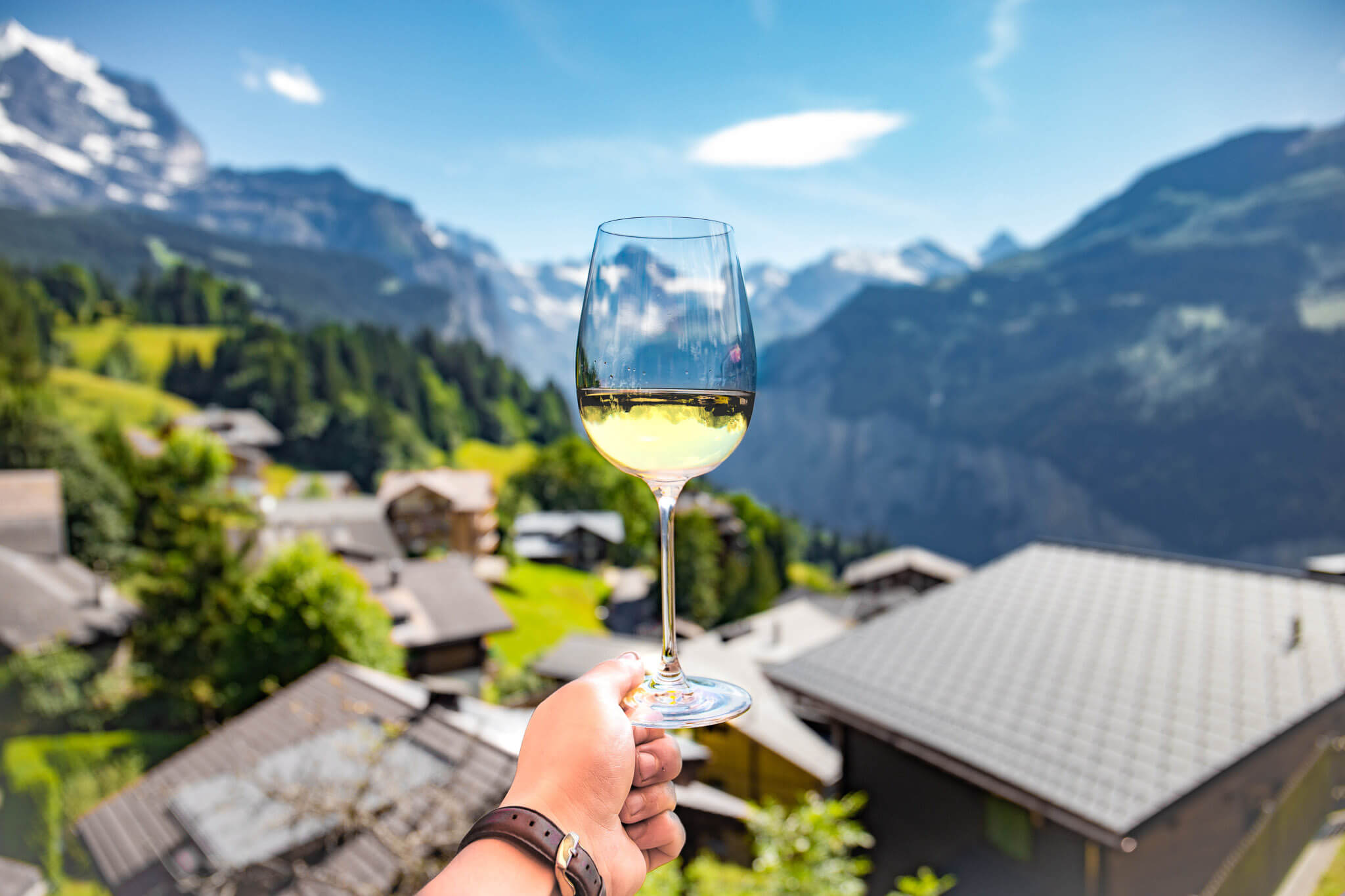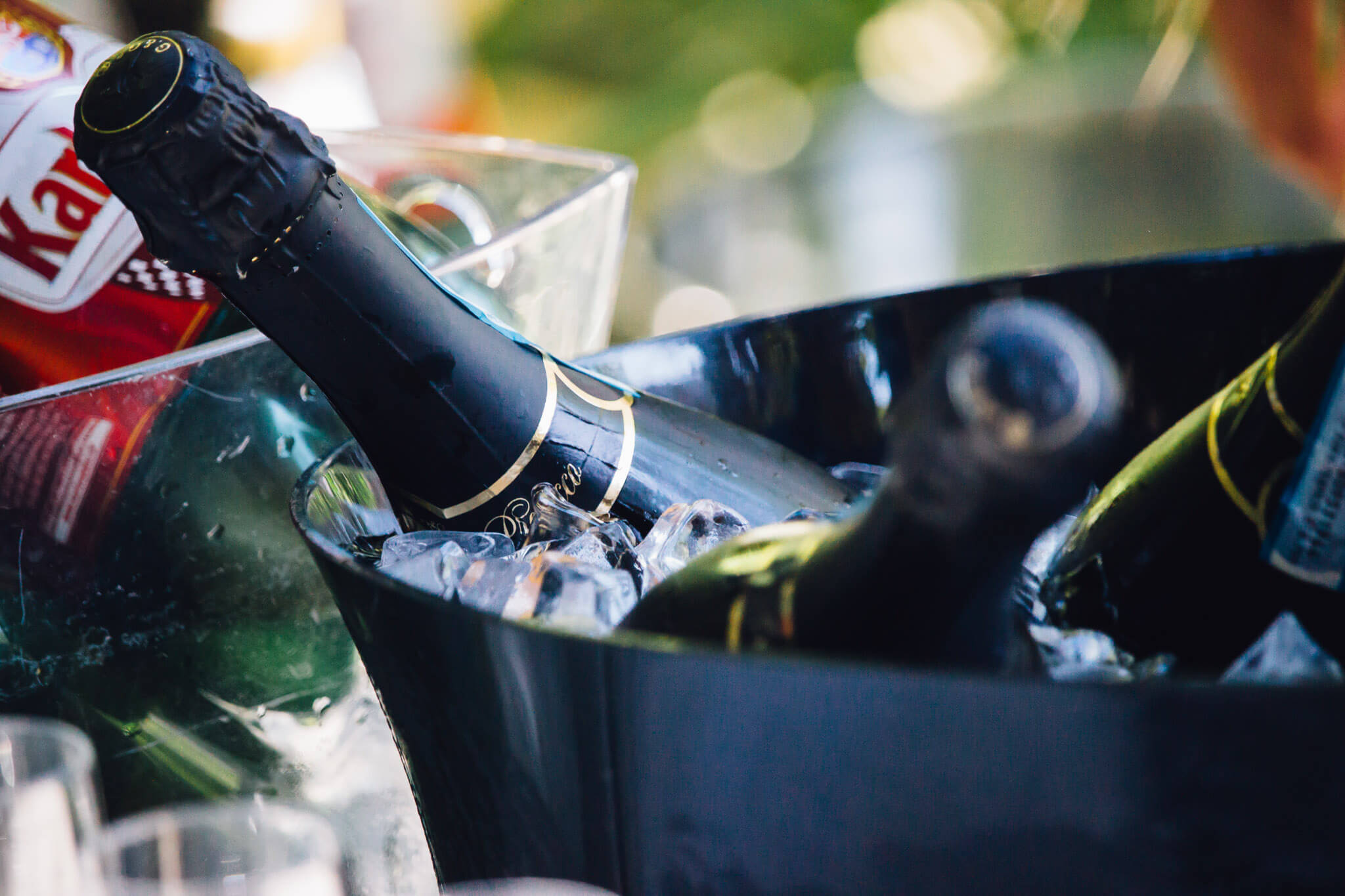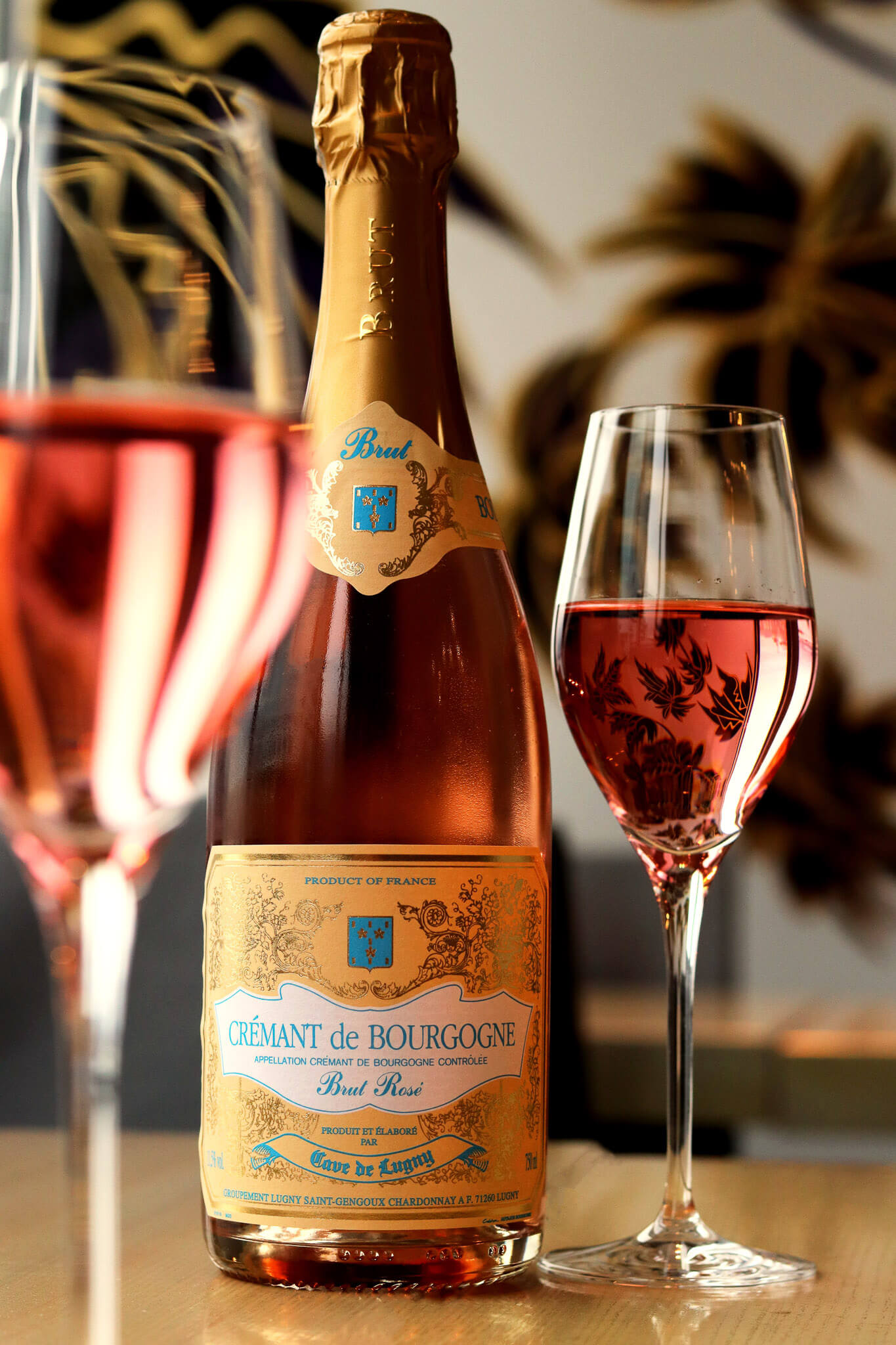
7 Impressive Distinctions: Asti Spumante
Chances are you know and love Asti Spumante (also known as Asti Spumanti, or even Spumanti Asti.).
Any way you pronounce it, Asti Spumante is a delicious, off-dry sparkling wine of Italy from the Asti region of Piedmont.
Asti Spumante is characterized by an attractive aroma of ripe peach on a summer day, with vibrant acidity and significant residual sugar.Asti Spumante is made from the Moscato grape, also used to make Moscato d’Asti.
In this post, you will learn 7 ways in which Asti Spumante is distinctive against other Italian sparkling wines.
**Click Here for Top Wine Resources**
Key Distinction #1: How Asti Spumante Differs From and Moscato d’Asti
Both Asti Spumante and Moscato d’Asti are made from the moscato grape of the Asti DOCG region of Piedmont, Italy. This region lies in the heart of Piedmont, bordering Liguria to the south.
Asti is characterized by rolling hills and gorgeous scenery. Like many regions in Europe Asti boasts a continental climate with cold winters and warm summers. The cool nights and mostly sunny days help produce ripe Moscato grapes with a high degree of acidity.
Because both Asti Spumante and Moscato d’Asti come from the floral-scented Moscato grape, are gently sparkling, and are off-dry, even wine scholars sometimes have a hard time telling them apart.
Below is a “top ten” list of similarities
- Both of these two wines are from the Asti DOCG region of Italy
- Both of these two wines come from the Moscato grape
- Both of these two wines have aromas of sweet white flowers
- Both of these two wines have residual sugar between 80 – 120 g/L
- Both of these two wines are “sparkling.”
- Both of these two wines have crisp acidity and a sense of minerality
- Both of these wines have alcohol below 7.5 abv%
- Both of these wines are made using the Charmat method (single fermentation in stainless steel vessel)
- Both of these wines begin with “juice” that is stored at Zero degrees until a demand for the wine is requested
- Both of these wines are EASILY mistaken for one another.
**Click Here to Read the Secrets of Moscati d’Asti**
So now that you know the similarities, how do you tell Asti Spumante and Moscato dAsti apart?
The key difference between these wines is the atmospheric pressure (the strength of the fizz, in plain words) of the two wines, and also its level of alcohol.For example, Asti Spumante is considered a “complete sparkling wine” and its internal pressure reaches 4 bars, rendering its bubbles a bit more vibrant that Moscato. The level of alcohol, of Asti Spumante is controlled in the fermentation process. It can fluctuate between 6% to 9%, but it is most typically found at 7.5% abv.
In contrast, Moscato d’Asti, also controlled in the fermentation process, is fixed at 5.5% alcohol.
It does not exceed 2.5 bar of atmospheric pressure. In fact, in the glass it sparkles so gently it is often necessary to look very closely at the wine to recognize the subtle fizz as bubbles.
Aroma of Moscato Grape
The aroma of the Moscato grape is like no other grape.
It is perfume.
It is candy.
It is pure deliciousness.
Just the aroma alone makes me HAPPY.
Poets have described the aroma of the Moscato grape different ways through the centuries.
What are the aromas?
Peaches.
Orange blossoms.
Jasmine.
It’s like you are walking in a delicious garden on a bright summer day.
But maybe the perfume/fashion company Prada captures it best.
Pop into a department store and just inhale a spritz of their Candy perfume.
This Video, in the Italian language with subtitles, nicely explains the aromas of Asti Spumante.

The Different Types of Moscato
Most consumers – even the majority of professionals – do not really distinguish the different types of Moscato.
Yet it can be an important factor for winemakers, as different types of Moscato are better suited to different types or styles of wine such as low alcohol, fortified, sparkling, and dry.
Moscato can even be red!
The Four Types of Moscato Grapes
- Muscat Blanc a Petits Grains
- Muscat of Alexandria
- Muscat Ottonel
- Muscat Rose a Petits Grains
Moscato Producing Countries
I’ve had Moscato from all over the world.
Moscato and Spumante from Asti – what many consider being the true classic – is one of my favorites.
That said, Australia produces a delicious sparkling wine made from the black Moscato grape.It is a beautiful shade of dark pink, fizzy, and so fabulous with its floral aromas and sweet flavors.
Some people call it “pink Champagne” but no resemblance at all.

France, Austria, Germany – and the USA
Australia also produces a classic wine from a cousin of the Muscat grape called Rutherglen Muscat.
This is considered a “classic” even though Australia is a young country, because it is such a classic style. The British call this wine a “sticky” because it is very sweet and viscous.
You can of course find the Muscat / Moscato grapes in France, Austria, and Germany. It is sometimes called Muskateller and is usually dry (yet fragrant).
When I was in the Roussillon, I tasted a lot of delicious Moscato wine.
It is a famous “classic brand” called Muscat de Rivesalts.
You can also find a classic style of wine made from the Muscat grape in the Rhone Valley, called Muscat de Beaumes-de-Venise.This wine is sweet, yet it is often served in cafes and restaurants as an apéritif before lunch or dinner.
I like it chilled.
And now California is producing Moscato wine! I did a story on Cline Cellars, which is known for its Zinfandel wines because of their warm sunny climate, yet they are making a Moscato wine too!
Does Asti Spumante have a lot of calories?
Asti Spumante from the Moscato grape has about a hundred calories for a four ounce glass. Dry wine ranges from 75 to 80 calories a glass.
Asti Spumante makes an excellent dessert on its own.
So it is worth the splurge!
**Click Here for More Wine Resources**

Asti Spumanti / Moscato d’Asti food pairing
You will find many ways to serve and enjoy Moscato-based sparkling wines.
Actually, I love Moscato based wines on their own as an Apéritif.
Chilled, of course.
If you are having a party, you might put your Moscato sparkler on ice just like you would a good Champagne.
With the first course
On a beautiful spring or summer day a glass of sparkling Moscato wine is perfect with a fresh salad, especially with just-cut herbs like mint.
With dessert
I LOVE a sweet sparkling Moscato with dessert!
Some of my favorites are simple things you can pick up quickly at the market like:
-
- Macaroons
- chocolate
- fresh raspberries
- Italian Amaretto cookies
The best glasses to serve Moscato sparkling wine
The BEST glasses for Moscato sparkling wine is the glass you have at hand!
When you are entertaining, I think it is VERY NICE to serve Moscato in these vintage glasses

Key Distinction #2: How Asti Spumante Differs From Prosecco
Both Asti Spumante and Prosecco are popular Italian sparkling wines from DOCG regions, though some Prosecco is made in a DOC region.
Both wines are made in the Charmat method (unlike the traditional method used in Champagne) which expresses fresh, fruity aromas.
The key difference is that Prosecco is almost always made in a dry style with higher alcohol that ranges from 10.5 to 11.5%.
Prosecco is also made from the Glera grape, which is neutral yet one can still detect subtle aromas of peach and apple on the nose.

Key Distinction #3: How Asti Spumante Differs From Franciacorta Sparkling Wine
It would be difficult to confuse the fresh, fruity, sweetly delicious Asti Spumante sparkling wine from Franciacorta, a town near Brescia in the Italian Region of Lombardy.
One is curious if the name reflects the high quality level of its sparkling wines, which even experts can confuse with French Champagne.The primary grapes of Franciacorta are Pinot Noir and Chardonnay, as in Champagne. Wines of Franciacorta are almost always dry. The combination of the wines being made in the traditional method, and the often lengthy aging period, gives these wines rich flavors of brioche and toasted bread.
In contrast, the fresh fruity summertime flavors of Asti Spumante are quite distinctive. This television commercial for Asti Spumante, produced in 1978, reflects the spirit of Asti Spumante.
Wonder how Asti Spumante differs from Prosecco?
Key Distinction #4: How Asti Spumante Differs From Brachetto di Acqui
These two wines actually have a great deal in common …
- They both come from the Piedmont region of Italy
- They are both from DOCG regions
- They are both off-dry
- They are both “gently” sparkling
- They both have aromas of fresh, ripe sweet fruit
- They are both produced with the Charmat method
- Like Asti Spumante, the fermentation of Brachetto di Acqui is stopped to leave the desired amount of residual sugar.
The two key differences is that Brachetto di Acqi comes from the Brachetto grape, which produces a red colored wine. The grapes are grown in the Acqui Terme area in the provence of Alessandria, which has some overlap into the province of Asti.
What to serve with Brachetto di Acqui?
Dark, decadent chocolate.
Possibly a rich, slightly bitter chocolate to contrast with the sweet floral flavors and aromatics.
Want to learn more about delicious Moscato d’Asti?

Key Distinction #5: How Asti Spumante Differs From Sparkling Wines of Trentino
The sparkling wines of Trentino, in the Alps of Northern Italy, received its DOC (Denominazione di origine controllata)1993.
Though the region produces still wines it is best known for its sparkling wines made from mostly international grapes like Pinot Noir and Chardonnay, in the “traditional” method similar to Champagne.
Asti Spumante, by contrast, is a sweet sparkler while the sparkling wines of Trentino are dry, and have more alcohol as well as atmospheric pressure.
Curious how Asti Spumante Differs from Moscato d'Asti
Key Distinction #6: How Asti Spumante Differs from Lambrusco
Lambrusco is a gently sparkling, red-colored wine made from the Lambrusco grape. This native grape grows in the region of Emilia-Romagna and Lombardy.
Astii Spumante shares a few similarities with Lambrusco:
- Both wines are made using the Charmat method
- Some Lambrusco wines can be sweet, though today most are dry
- Both wines are very aromatic
- Both wines are only gently sparkling
- Both wines typically have below 9% abv
There is little chance that these wine can be mistaken for one another, as Lambrusco is a red-colored wine. Lambrusco also has soft, but textured tannins and a savory flavor.

Key Distinction #7: How Asti Spumante Differs from Sparkling Arneis
The Arneis grows in the Roero region of Piedmont. Traditionally, it was used to blend with, and soften, the wines made from the red Nebbiolo grape. But recently it has been achieving fame on its own as both a still and sparkling wine.
Both wines are made in the Charmat method to produce fresh, fruity aromas.
Both wines can have aromas of mature yellow apple skin, acacia, dried apricot, and orange zest.
But though the aromas of Arneis can be similar to Asti Spumante, Arneis is also always a dry wine, with alcohol at least 11%…
Where to Enjoy Your Asti Spumante
Of course, you can just pop open a bottle at home. Yet last year, I went to Taormina – a resort town in Sicily – and can imagine enjoying the delicious goodness from my hotel room! You can see and read it here.
Like this article? Chcck out these excellent wine book reviews here.
Please SHARE this article visit the social media links and subscribe to my newsletter here
If you like this article you will like:
— Dominus Estate
— Chappellet Family Winery
— Hess Collection
— Frog’s Leap
Curious to Learn More About Wine? Start Here
Want to Grab Quick Wine Resources? Click Here
About Author Marisa D’Vari
D’Vari contributes to Forbes.com, Financial Times, World of Fine Wine, Quarterly Review of Wine, Decanter Robb Report, San Francisco Chronicle, South China Morning Post, and more.
She holds the (WSET) diploma, Certified Sommelier through the Court of Master Sommeliers, a Certified Wine Educator through the Society of Wine Educators … to see it all, please click on bio
Check Out A Vist to Asti in Piedmont

